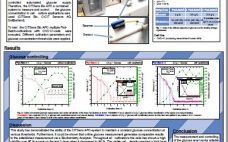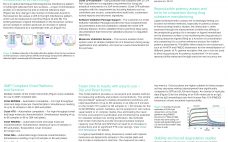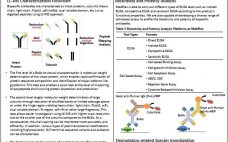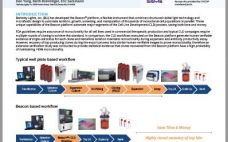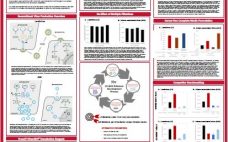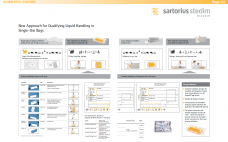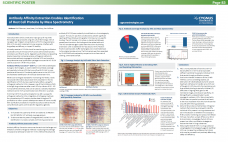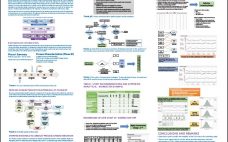To facilitate and speed up process- and media development, online measurement techniques for shake flasks accompany manual sampling for maximum information output per cultivation. Off-gas analysis gives oxygen transfer rate (OTR), carbon dioxide transfer rate (CTR) and respiratory quotient (RQ) as quantitative measures of the physiological state of the culture. On shake flask scale, multiple cultivations are usually run in parallel. Off-gas analysis should therefore be cost effective, easy to handle and versatile to match various applications. Therefore, we developed…
Posters
Evaluation Of a New Glucose Control Strategy Using CITSens Bio APC (Automated Process Control) for CHO Fed-Batch Application
For the cultivation of cells in research and development, high cell densities and reproducibility are fundamental aims. For that goal a high degree of automation is favorable to reduce the risk of contamination and deviation between batches. As glucose is one of the main energy sources for cells, it is crucial to maintain a constant and controlled automated glucose supply. Therefore, the CITSens Bio APC a combined system to measure and control the glucose concentration in cell culture applications was…
High Productivity and Process Economy in GxP Applications with the Octet™ Platform
Using the label-free optical technique of Bio-Layer Interferometry (BLI), the Octet platform provides real-time analysis of molecular interactions. It relies on the robust and easy-to-use Dip and Read™ format, which provides faster time to results relative to technologies like ELISA and SPR. It also operates in a fluidics-free format, thereby minimizing the complexity in analyte detection by fluidics-based technologies like SPR. It provides high-throughput analysis, with the option of analyzing to 96 samples simultaneously, thereby increasing analytical productivity. It has…
Accelerate Cell and Gene Therapy Development and Manufacturing with Fully Integrated Closed CAR-T Cell Therapy Platform
For many years, the primary forms of cancer treatment have been chemotherapy, radiation, and surgery. An amazing breakthrough known as chimeric antigen receptor (CAR) T-cell therapy is being studied in the treatment of various types of cancer, including acute and chronic lymphoblastic leukemia, non-Hodgkin lymphoma, myeloma, and solid tumors. Developing innovative advanced therapies is one of our greatest opportunities to dramatically improve patients’ lives. WuXi Advanced Therapies recently announced the expansion of its service capabilities by offering a fully integrated…
Characterization Platform for Structural and Functional Feature Investigation of Bispecific Molecules
Bispecific antibodies (BsAbs ) bind to two or more targets which could be different antigens or different epitopes. Structurally, one type of bispecific antibody is similar to an IgG which contains an Fc region, and other bispecifics do not have an Fc region and typically have a relatively small molecular weight. Therefore, the characterization for a bispecific is more challenging than for a typical monoclonal antibody because of this variation in structure. The poster here discusses a set of platform…
Automated Cell Line Development With Greater Than 99% Monoclonality On the Beacon® Platform
For all cell lines used in production for commercial therapeutics, FDA guidelines require assurance of monoclonality. This standard means that typical cell line development (CLD) campaigns often require multiple rounds of cloning easily spanning several weeks to months. However, Berkeley Lights, Inc. (BLI) has developed the ability to save time and money spent on CLD processes via automation. The uniquely powerful Beacon® optofluidic platform performs single-cell cloning, growth and titer measurements, and recovery of top clones with unrivaled (>99%) monoclonality…
High Titer Recombinant Lentivirus and Adeno-associated Virus Production for Therapeutic Applications
Increase your recombinant lentivirus and adeno-associated virus (AAV) production with a novel transfection formulation, TransIT-VirusGEN® Transfection Reagent, specifically designed for large-scale virus production to support gene and cell therapies. This poster highlights TransIT-VirusGEN® for use in adherent or suspension cell culture platforms along with enhancers that significantly increase functional virus titers over PEI based formulations. Testing was performed with multiple serum-free media formulations and examined using different plasmid DNA concentrations to better address compatibility within various workflows. Download the poster…
New Approach for Qualifying Liquid Handling in Single-Use Bags
2D Flexsafe® Bags and Shells Offer Strong Validation: Complete logistical solution for handling and shipping of liquid bulk drug substance in a 2D Flexsafe® bag & shell Quality by design principles Comprehensive and innovative testing program following the guidelines like ASTM, NF and ISO The system allows for safe variable shipping volumes of 10–120% of nominal fill volume and can be leveraged by the end-users for their own process validation Fill out the form below to view the complete poster…
Antibody Affinity Extraction Enables Identification of Host Cell Proteins by Mass Spectrometry
Host cell proteins (HCP) constitute a major group of impurities for biologic drugs produced using cell culture technology. Even at nanogram per milligram concentrations of HCP to drug substance (DS), HCPs can elicit undesired immune response, interfere with drug safety and efficacy, or impact DS stability. A broadly-reactive HCP ELISA should be used during the purification processes to ensure removal of HCPs and to demonstrate process consistency and final DS purity. Regulatory authorities are requesting biopharmaceutical companies employ orthogonal methods…
Step-wise strategy to address process characterization and late phase development – toward the definition of a standardized approach
Drivers for process characterization and late phase development include improving process understanding, enhancing process robustness, and assurance that the process delivers consistent product quality within all Proven Acceptable Ranges (PARs). Regulator’s expectations for biologic submissions include the application of statistical methods to improve the confidence of the PARs and knowledge of the design space for a process. Different approaches have been reported for process characterization but contain common elements including risk assessment, scale-down model qualification, and statistical design of experiments.…


